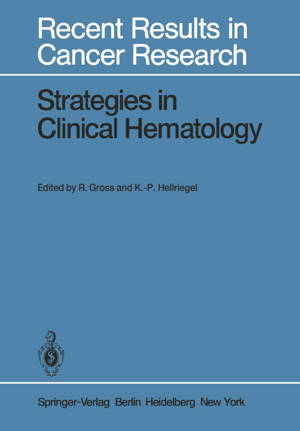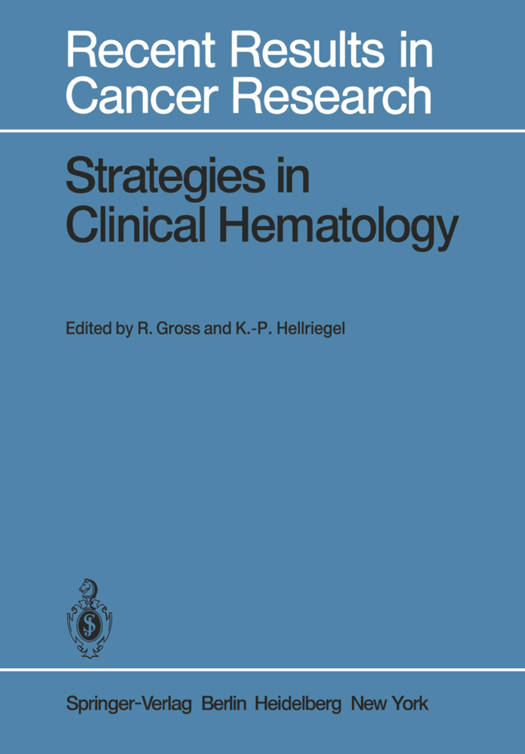
Je cadeautjes zeker op tijd in huis hebben voor de feestdagen? Kom langs in onze winkels en vind het perfecte geschenk!
- Afhalen na 1 uur in een winkel met voorraad
- Gratis thuislevering in België vanaf € 30
- Ruim aanbod met 7 miljoen producten
Je cadeautjes zeker op tijd in huis hebben voor de feestdagen? Kom langs in onze winkels en vind het perfecte geschenk!
- Afhalen na 1 uur in een winkel met voorraad
- Gratis thuislevering in België vanaf € 30
- Ruim aanbod met 7 miljoen producten
Zoeken
Strategies in Clinical Hematology
€ 100,95
+ 201 punten
Omschrijving
Our present knowledge in the fields of both experimental and clinical hematology has rapidly progressed because of the complementary aspect one offers the other. In light of the above, basic research is a prerequisite for both diagnostic and therapeutic advances. Thus it would seem justified to review the pathogenesis of hemoblastoses and the experiences resulting from those animal experiments which are trans- ferable to human conditions. The association of Epstein-Barr virus infection with Burkitt's lymphoma appeared to be a model for the viral etiology of human neoplasias, the subject of many decades discussion. Although there is evidence for the correlation, the exact role of the virus in the etiology of the disease still remains to be clarified. In public, attention has been focused on the induc- tion of neoplasia by environmental factors. For the hema- tologist the induction ofhemoblastoses by immunosuppressive and cytostatic drugs gains increasing significance as a result of the wider use of these agents - not only cytotoxic cancer therapy, but also in treating autoimmune diseases and in managing transplantation problems. Physiology of the human stem cell has been intensively studied, and the presently available in vitro tests are of clinical use and enable greater understanding of pathophysiology, especially that of aplastic anemias and leukemias. Immunologic and biochemical mark- ers have been of value in leukemias and malignant lym- phomas, both as diagnostic tools and as prognostic parameters.
Specificaties
Betrokkenen
- Uitgeverij:
Inhoud
- Aantal bladzijden:
- 142
- Taal:
- Engels
- Reeks:
- Reeksnummer:
- nr. 69
Eigenschappen
- Productcode (EAN):
- 9783642813733
- Verschijningsdatum:
- 23/08/2014
- Uitvoering:
- Paperback
- Formaat:
- Trade paperback (VS)
- Afmetingen:
- 170 mm x 244 mm
- Gewicht:
- 258 g

Alleen bij Standaard Boekhandel
+ 201 punten op je klantenkaart van Standaard Boekhandel
Beoordelingen
We publiceren alleen reviews die voldoen aan de voorwaarden voor reviews. Bekijk onze voorwaarden voor reviews.








